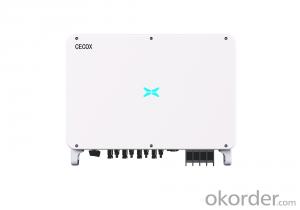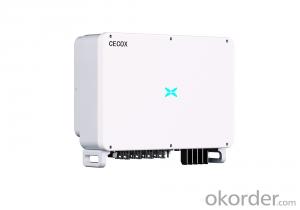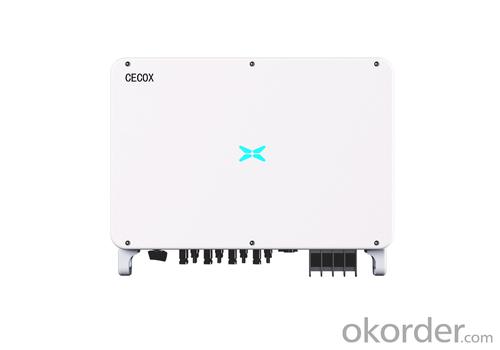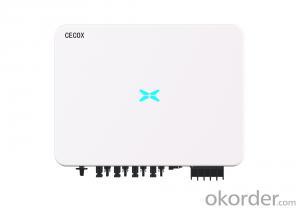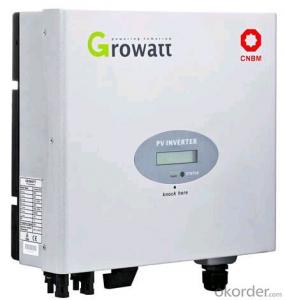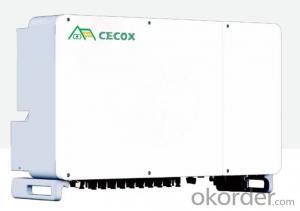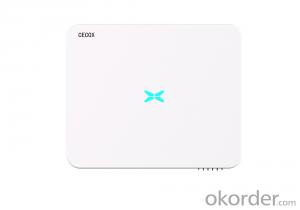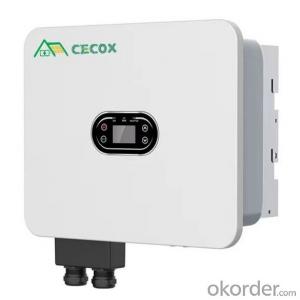3kVA Solar Inverter - 50kw 60kw 66kw 70kw Three Phase On-Grid Solar Inverter
- Loading Port:
- SHENZHEN
- Payment Terms:
- TT OR LC
- Min Order Qty:
- 30 unit
- Supply Capability:
- 500 unit/month
OKorder Service Pledge
OKorder Financial Service
You Might Also Like
Specification
XG50kW-70kW
Three Phase On-Grid Solar Inverter
XG50KTR | XG50KTRL | XG60KTR | XG60KTRL | XG66KTRL | XG70KTRL | |
Input(DC) | ||||||
Max. Input Power | 80 kW | 96 kW | 105.6kW | 112kW | ||
Max. Input Voltage | 1100V | |||||
Start Voltage | 250V | |||||
Rated Input Voltage | 600V | 700V | ||||
Full-load MPP Voltage Range | 520V-850V | 600V-850V | ||||
MPPT Voltage Range | 200V-1000V | |||||
Number of MPP Trackers | 4 | |||||
Number of string per MPPT | 3/2/3/2 | 3/3/3/3 | ||||
Max.Current per MPPT | 39A/26A/39A/26A | 39A | ||||
Max.Short Circuit Current per MPPT | 48A/32A/48A/32A | 48A | ||||
Output(AC) | ||||||
Max. Output Current | 79.7 A | 66.2 A | 95.6 A | 79.4 A | 87.4A | 96.2A |
Rated Output Power | 50 kW | 60 kW | 66kW | 70kW | ||
Max. Output Power | 55 kVA | 66kVA | 72.6kVA | 77kVA | ||
Rated Grid Frequency | 50 Hz / 60 Hz | |||||
Rated Grid Voltage | 230Vac / 400Vac | 277Vac / 480Vac | 230Vac / 400Vac | 277Vac/480Vac | ||
Power Factor | >0.99 (0.8 leading~0.8 lagging) | |||||
THDi | <3% (Rated Power) | |||||
Efficiency | ||||||
Max. Efficiency | 98.70% | 98.80% | ||||
European Efficiency | 98.40% | 98.50% | ||||
MPPT Efficiency | 99.90% | |||||
Protection | ||||||
DC reverse polarity protection | Yes | |||||
Anti-Islanding protection | Yes | |||||
AC short circuit protection | Yes | |||||
Residual current monitoring unit | Yes | |||||
Insulation resistance monitoring | Yes | |||||
Ground fault monitoring | Yes | |||||
Grid monitoring | Yes | |||||
PV string monitoring | Yes | |||||
Surge protection | Type II | |||||
AFCI protection | Optional | |||||
Communication | ||||||
Display | LED / LCD / WiFi+App | |||||
Communication | Standard:RS485 Optional:WiFi / GPRS / Ethernet | |||||
Standard Compliance | ||||||
Grid Connection Standards | IEC 61727, IEC 62116, IEC 60068, IEC 61683, VDE-AR-N 4110:2018, VDE-AR-N 4105:2018, VDE-AR-N 4120:2018, EN 50549, AS/NZS 4777.2:2020, CEI 0-21, VDE 0126-1-1/A1 VFR2014, UTE C15-712-1:2013, DEWA DRRG, NRS 097-2-1, MEA/PEA, C10/11, G98/G99 | |||||
Safety/EMC | IEC 62109-1:2010, IEC 62109-2:2011, EN 61000-6-2:2005, EN 61000-6-3:2007/A1:2011 | |||||
General Data | ||||||
Dimensions (W*H*D) | 650 x 450 x 260 mm | |||||
Weight | 50 kg | |||||
Operating Temperature Range | -30° C ~ +60° C | |||||
Cooling Method | Smart Cooling | |||||
Protection Degree | IP66 | |||||
Max. Operating Altitude | 4000 m | |||||
Relative Humidity | 0 ~ 100% | |||||
Topology | Transformerless | |||||
Night Power Consumption | < 1 W | |||||
MARKETING & SERVICE NETWORK
CNBM global sales team provides customers with professional and efficient pre-sale,
in sale and after-sale services, and enhances the added value of the brand with high-quality services.
Products Details:
High voltage protection Over load protection
Battery reverse connected protection Dust-proof
Low voltage protection Overheating protection
Output short-circuit protection Insect prevention
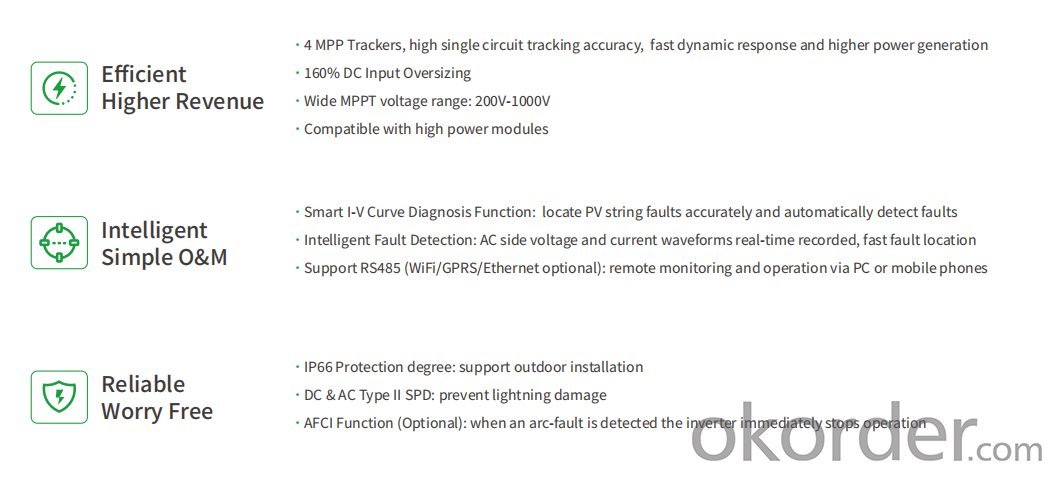
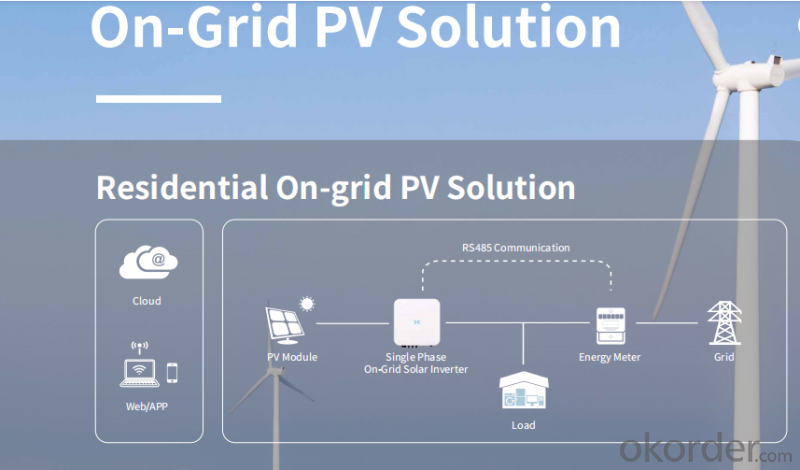
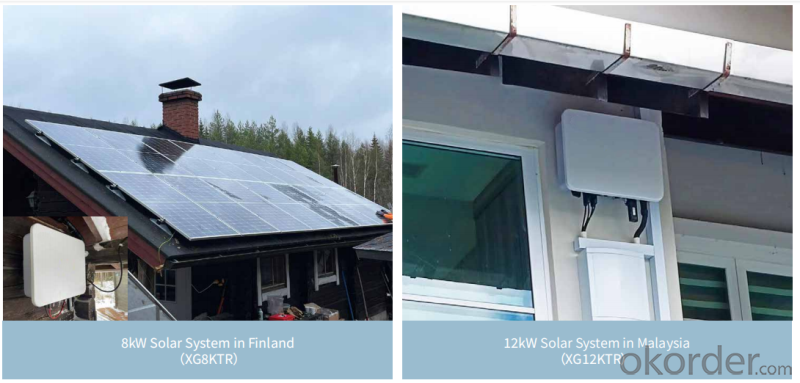


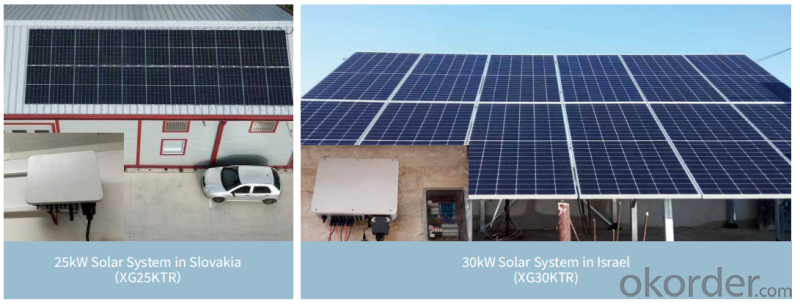
FAQ:
Q1:May I take some samples to test before placing the order ?
A1:Yes, welcome to take some sample to test!
Q2:How about the delivery time?
A2:7 days for sample; 25 days for bulk order.
Q3:What is the warranty of the controller?
A3:1 years warranty.
Q4:How to solve the technical problems?
A4:24 hours after-service consultancy just for you and to make your problem to be solved easily.
Q5:What payment methods do your company support?
A5:T/T, Western Union, Paypal, L/C etc.
Q6:What are the price terms can you offer for us?
A6:We can accept EXW, FOB, CIF and so on.
Q7:Do you have any certifications for your products?
A7:We have ISO9001:2000, CE, RoHS, certificates for all of our products.
- Q: Can a solar inverter be used with different types of backup power sources?
- Yes, a solar inverter can be used with different types of backup power sources. Solar inverters are designed to convert the DC power generated by solar panels into AC power that can be used to power household appliances and devices. They can be connected to various backup power sources like batteries, generators, or the grid to provide uninterrupted power supply during periods of low sunlight or power outages.
- Q: Are there any noise or sound considerations with a solar inverter?
- Yes, there are noise considerations with a solar inverter. While solar inverters typically produce low levels of noise, it is important to ensure that the inverter is placed in a well-ventilated area to avoid any potential fan or cooling system noise. Additionally, some older models of inverters may produce a slight humming sound during operation, although newer models have significantly reduced this noise.
- Q: What is the role of a reactive power controller in a solar inverter?
- The role of a reactive power controller in a solar inverter is to regulate and maintain the power factor of the inverter output. It ensures that the reactive power generated by the solar panels is properly balanced with the active power, thereby optimizing the efficiency and stability of the solar power system.
- Q: Can a solar inverter be used with a time-of-use electricity tariff?
- Yes, a solar inverter can be used with a time-of-use electricity tariff. A solar inverter is responsible for converting the direct current (DC) produced by solar panels into alternating current (AC) that can be used to power household appliances. It is compatible with different types of electricity tariffs, including time-of-use tariffs, which charge different rates for electricity usage based on specific times of the day. By integrating a solar inverter with a time-of-use tariff, homeowners can optimize their energy consumption and potentially save on their electricity bills by utilizing solar power during off-peak hours when rates are lower.
- Q: How does a solar inverter handle voltage fluctuations in the grid?
- A solar inverter handles voltage fluctuations in the grid by constantly monitoring the grid voltage and adjusting its own output voltage accordingly. When the grid voltage drops, the inverter increases its output voltage to compensate, and conversely, when the grid voltage rises, the inverter decreases its output voltage. This helps to stabilize the voltage and ensure that the solar system remains connected and operational even during fluctuations in the grid.
- Q: What is the role of a solar inverter in fault ride-through capability?
- The role of a solar inverter in fault ride-through capability is to ensure that the solar power system remains connected to the grid during grid faults or disturbances. The inverter is responsible for detecting the fault and adjusting its operating parameters to ride through the fault without disconnecting from the grid. This capability helps maintain a stable and reliable power supply, as the solar inverter can continue to inject power into the grid even during temporary faults, reducing the impact on the overall system stability.
- Q: What is the maximum efficiency rating of a solar inverter?
- The maximum efficiency rating of a solar inverter can vary depending on the specific model and technology used, but generally, the highest efficiency ratings can range from 95% to 99%.
- Q: Can a solar inverter be used in a solar-powered data center?
- Yes, a solar inverter can be used in a solar-powered data center. A solar inverter is an essential component that converts the DC (direct current) electricity generated by solar panels into AC (alternating current) electricity that can be used to power various devices, including data center equipment. By utilizing a solar inverter, a solar-powered data center can efficiently harness the electricity generated by solar panels and integrate it into its power supply system.
- Q: Can a solar inverter be used with solar-powered data centers?
- Yes, a solar inverter can be used with solar-powered data centers. A solar inverter is the device that converts the direct current (DC) generated by solar panels into alternating current (AC) electricity that can be used to power electrical devices. By connecting a solar inverter to a solar-powered data center, the generated solar energy can be efficiently utilized to power the data center's electrical infrastructure and equipment. This helps reduce the reliance on traditional energy sources and promotes sustainability in data center operations.
- Q: How does a solar inverter handle voltage dip and interruption?
- A solar inverter handles voltage dip and interruption by continuously monitoring the electricity supply from the solar panels. In the event of a voltage dip or interruption, the inverter immediately adjusts its output voltage to match the required level, thereby stabilizing the power supply to connected devices. Additionally, some advanced solar inverters are equipped with built-in energy storage systems, such as batteries, which seamlessly take over during voltage dips or interruptions, ensuring uninterrupted power supply.
Send your message to us
3kVA Solar Inverter - 50kw 60kw 66kw 70kw Three Phase On-Grid Solar Inverter
- Loading Port:
- SHENZHEN
- Payment Terms:
- TT OR LC
- Min Order Qty:
- 30 unit
- Supply Capability:
- 500 unit/month
OKorder Service Pledge
OKorder Financial Service
Similar products
Hot products
Hot Searches
Related keywords
